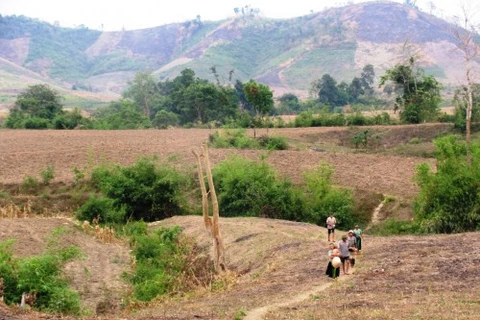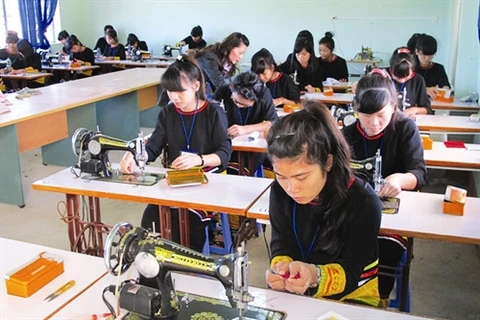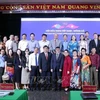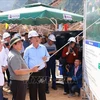Dak Lak (VNA) – The Tay Nguyen Central Highlands has narrowed the development gap with other regions in the country, with its per capita income reaching 36.15 million VND (approximately 1,645 USD) or 80 percent of the national average in 2015, compared to 15.5 million VND or just 67 percent of the national figure five years before.
According to Dieu Kre, standing deputy head of the Steering Committee for Tay Nguyen, the region posted an annual GDP growth of 8 percent since 2011 thanks to a shift to intensive farming, high-value industrial plants in agriculture and development of some key industries including hydro power, mining and farm produce processing.
In agriculture, production value per hectare of cultivated land has increased from 73.1 million VND in 2011 to 97.5 million VND at present as a result of crop restructuring and the application of intensive farming and technologies.
Meanwhile, the industrial sector has expanded by an average 11.4 percent a year in the five year period.
The region absorbed more than 267 trillion VND in investment from all sources during 2011-2015, while the banks’ network has been expanded, meeting local capital needs. Socio-economic infrastructure has been greatly improved, particularly the transport network.
Total investment in the transport network in Tay Nguyen topped 64.2 trillion VND during the past five years, with 74.2 percent going into national routes.
The region now boasts a road system with a combined length of 39,812km, accounting for 7.33 percent of the country’s total. The system includes 2,517km of national roads and 1,918km of provincial roads. Of the more than 35,300km of rural roads, 43 percent have been concreted over. In particular, the completion of the Ho Chi Minh Highway (National Route 14) and the upgrade of Pleiku Airport in Gia Lai Province and Buon Ma Thuot Airport in Dak Lak Province have contributed greatly to facilitating regional development. All communes in the region are now accessible by car even in the rainy season.
Expansion has also been seen in other infrastructure facilities in the region including the postal and telecommunication network as well as power, irrigation and water supply systems. The canal network, with a combined length of 5,000km has now met 65 percent of the region’s water demand.
The national electricity grid has reached 100 percent of communes, and 96 percent of households in rural areas have access to electricity.
Along with infrastructure, development has been seen in education, health care and other social areas, bringing about remarkable reduction of poverty. Nearly 181,000 households have risen above poverty since 2011, reducing the rate of poverty to 7.34 percent of all households compared to 18.92 percent in 2011. More than 428,000 labourers received vocational training in the five-year period, and 536,000 found jobs, of whom 31 percent are ethnic minorities.
Many ethnic minority communities have ended their nomadic lifestyle and settled down, switching from slash-and-burn practice to cultivating long-term industrial plants such as coffee, pepper and beans, thus raising their income and living conditions.
The Steering Committee official said the region will continue with concerted efforts to achieve the socio-economic goals of this year, paving the way for the five-year development plan of 2016-2020.
Tay Nguyen will push ahead with the economic restructuring and switching to a new growth model, Dieu Kre said, emphasizing that carrying out the national strategy to cope with climate change will be a priority. The region will take drastic actions to protect its forests, close down natural forests while improving the operation of forestry companies and accelerating the planning of irrigation development.
More investment will be mobilized from every possible source to complete the transport infrastructure in the region, particularly the axis roads along the National route 14C and those connecting Tay Nguyen and the south central region.
The region will also research policies and measures to foster hi-tech agriculture and seek specific plants and animals suitable for its different ecological areas with a view to increasing production value of the agriculture sector and raising local residents’ income.
The Tay Nguyen Central Highlands comprises five provinces: Dak Lak, Dak Nong, Gia Lai, Kon Tum and Lam Dong.-VNA























